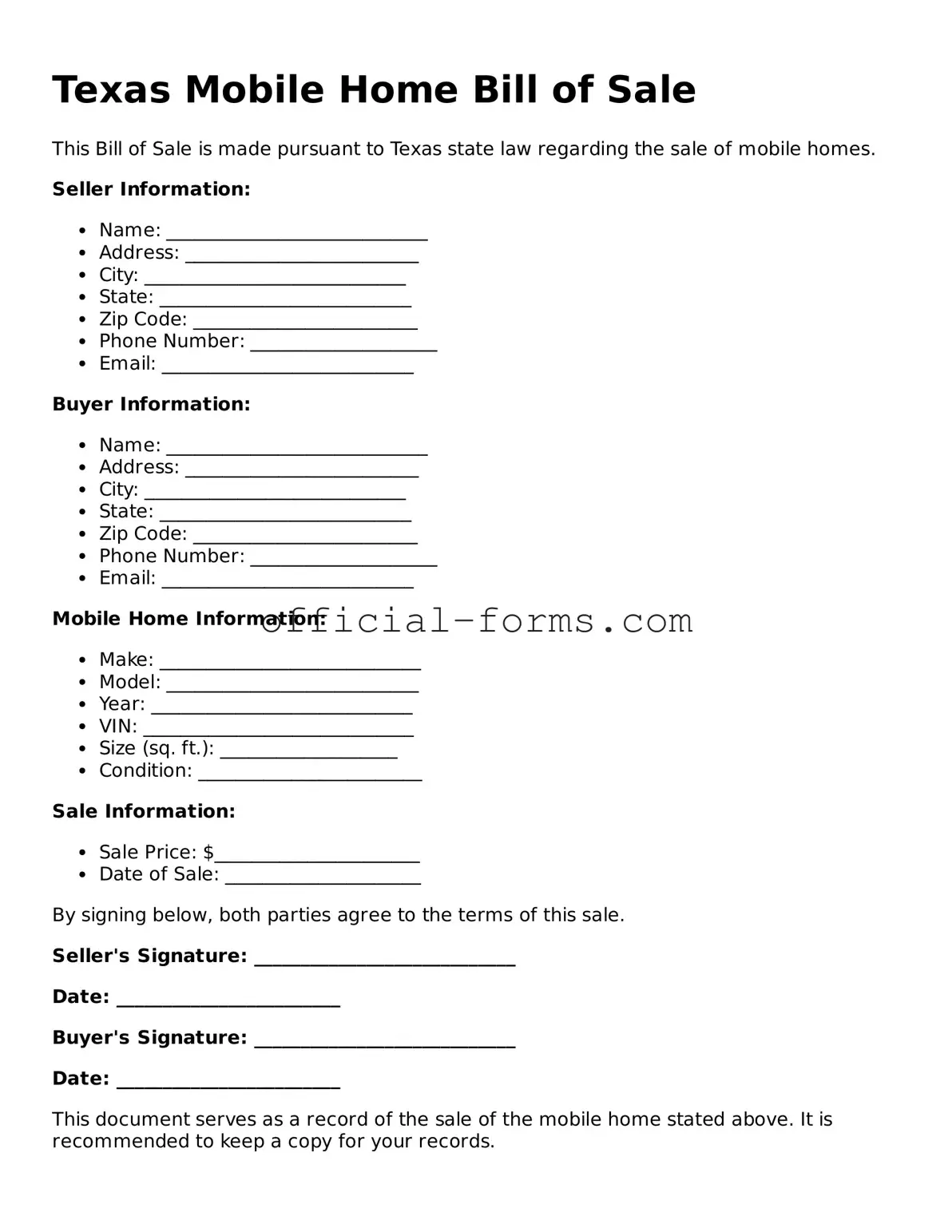Completing the Texas Mobile Home Bill of Sale form is a crucial step in transferring ownership of a mobile home. However, many individuals encounter pitfalls during this process. One common mistake is failing to provide accurate identification details. Buyers and sellers must ensure that their names, addresses, and contact information are correct. Inaccuracies can lead to complications down the line, especially if disputes arise regarding ownership.
Another frequent error is neglecting to include the vehicle identification number (VIN) of the mobile home. This number serves as a unique identifier and is essential for proper registration. Omitting the VIN can create confusion and hinder the transfer process, making it difficult for the new owner to register the mobile home with the state.
Additionally, many individuals overlook the importance of documenting the sale price. Leaving this field blank or listing an incorrect amount can lead to misunderstandings between the parties involved. It is vital to specify the agreed-upon price to ensure clarity and avoid future disputes regarding payment.
Some people also forget to sign the form. Without signatures from both the buyer and the seller, the transaction lacks legal validity. This oversight can render the entire document ineffective, leading to complications in the transfer of ownership.
Moreover, individuals sometimes fail to have the form notarized. While notarization may not be strictly required in every situation, having a notary public witness the signatures adds an extra layer of legitimacy to the transaction. This step can be particularly important if any disputes arise later on.
Another mistake involves not providing sufficient information about the mobile home itself. Details such as the year, make, model, and condition of the mobile home should be included. This information not only helps in the identification of the property but also protects both parties by clarifying what is being sold.
Lastly, some individuals neglect to keep a copy of the completed Bill of Sale. Retaining a copy is essential for both the buyer and seller, as it serves as proof of the transaction. Without a copy, either party may struggle to provide evidence of the sale in the future, which could lead to complications regarding ownership or liability.
